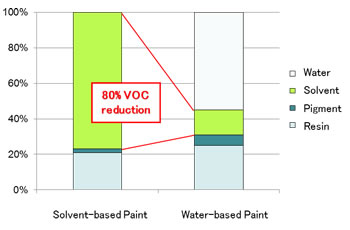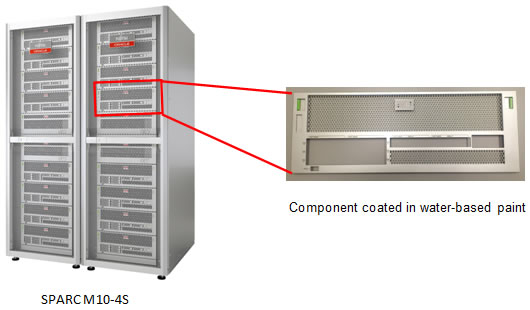Archived content
NOTE: this is an archived page and the content is likely to be out of date.
Fujitsu Pioneers Industry's First Use of Water-Based Paint for Plastic Chassis ICT Equipment
Cuts use of petroleum resources by 54% and volatile organic compounds by 80% compared to solvent-based paints
Fujitsu Limited,Fujitsu Laboratories Ltd.
-
[1] Core shell structure
Two chemicals, where one forms a core and the other surrounds the first to form a shell.
-
[2] Volatile organic compound
Organic chemicals that easily evaporate into the air at room temperature, causing pollution and health problems when released into the environment.
-
[3] About 40% of all VOC emissions are accounted for by paints
According to 2010 materials from Japan's Ministry of the Environment.See http://www.env.go.jp/air/osen/voc/inventory/est_industry.pdf (Japanese)
About Fujitsu
Fujitsu is the leading Japanese information and communication technology (ICT) company offering a full range of technology products, solutions and services. Over 170,000 Fujitsu people support customers in more than 100 countries. We use our experience and the power of ICT to shape the future of society with our customers. Fujitsu Limited (TSE:6702) reported consolidated revenues of 4.5 trillion yen (US$54 billion) for the fiscal year ended March 31, 2012. For more information, please see http://www.fujitsu.com.
About Fujitsu Laboratories
Founded in 1968 as a wholly owned subsidiary of Fujitsu Limited, Fujitsu Laboratories Limited is one of the premier research centers in the world. With a global network of laboratories in Japan, China, the United States and Europe, the organization conducts a wide range of basic and applied research in the areas of Next-generation Services, Computer Servers, Networks, Electronic Devices and Advanced Materials. For more information, please see: http://jp.fujitsu.com/labs/en.
All company or product names mentioned herein are trademarks or registered trademarks of their respective owners. Information provided in this press release is accurate at time of publication and is subject to change without advance notice.
This press release has been revised as of December 17, 2018.
Date: 04 March, 2013
City: Tokyo
Company:
Fujitsu Limited,
Fujitsu Laboratories Ltd.,
,
,
,
,
,
,
,
,

